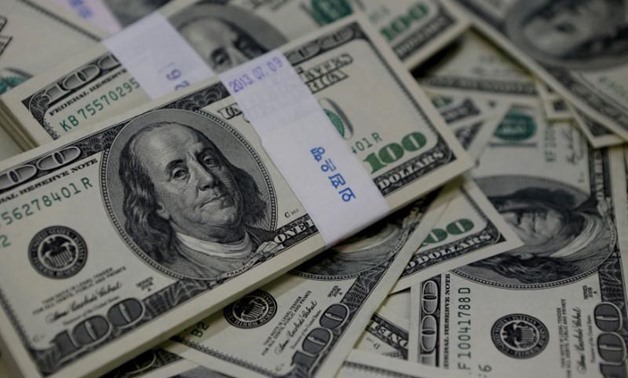
U.S. one-hundred dollar bills are seen in this picture illustration, August 2, 2013 - REUTERS/Kim Hong-Ji/Illustration
TOKYO - 18 June 2018: The dollar edged up towards a seven-month high on Monday as investors bet the United States and China would avoid a full-blown trade war, although tensions between the two slowed its gains.
The dollar index versus a basket of six major currencies crept up 0.1 percent to 94.862.
The index was close to 95.131, a peak scaled on Friday, thanks to the dollar soaring more than 1 percent last week after the U.S. Federal Reserve gave a hawkish signal on interest rates while the European Central Bank struck a dovish tone.
On top of last week’s Fed, ECB and the Bank of Japan policy meetings, the currency markets also weighed a U.S.-North Korea summit and the renewed trade tensions between the world’s two biggest economies.
The greenback navigated through those events, last of which was a decision by the United States on Friday to enact tariffs on $50 billion in Chinese goods. Soon afterward, China’s official Xinhua news agency said Beijing would impose 25 percent tariffs on 659 U.S. products, ranging from soybeans and autos to seafood.
“The reaction by currencies to the trade developments has been mostly limited as the U.S. measure and China’s response were in line with expectations,” said Yukio Ishizuki, senior currency strategist at Daiwa Securities in Tokyo.
“A further escalation of U.S.-China trade tensions is of course a risk scenario. But the current tariffs, even if implemented, will hardly dent the global economy and the market also has to ponder about a scenario in which the two countries try to defuse tensions.”
The dollar was down 0.2 percent at 110.44 yen, weighed down as risk appetites cooled on the back of falling Tokyo shares.
The Nikkei fell on Monday with sentiment hurt by a combination of trade concerns and a strong earthquake that hit the western Japanese city of Osaka. [.T]
Even when natural disasters and regional tensions hit close to home, the yen is often viewed as a safe haven currency, partly because of the resilience provided by Japan’s current account surplus.
Despite the slip, the dollar managed to stay in reach of a three-week high of 110.905 yen brushed on Friday.
The euro fell 0.15 percent to $1.1592, extending losses after sliding 1.3 percent the previous week after the ECB signalled it will keep interest rates at record lows well into next year.
Commodity-linked currencies sagged on the back of sliding crude oil prices.
The Canadian dollar traded at C$1.3184 per dollar after retreating to a one-year low of C$1.3210 on Friday.
The Australian dollar was little changed at $0.7442 after plumbing a five-week low of $0.7426 and the New Zealand dollar lost 0.25 percent to $0.6928 .
Brent crude futures fell to a six-week low of $72.45 a barrel on Monday in the wake of reports that top suppliers Saudi Arabia and Russia would likely increase production at the June 22 OPEC meeting in Vienna. [O/R]
The OPEC meeting “will be one of this week’s key events due to the way oil prices shape economic and price views and thus impact yields and currencies,” said Koji Fukaya, president at FPG Securities in Tokyo.

Comments
Leave a Comment